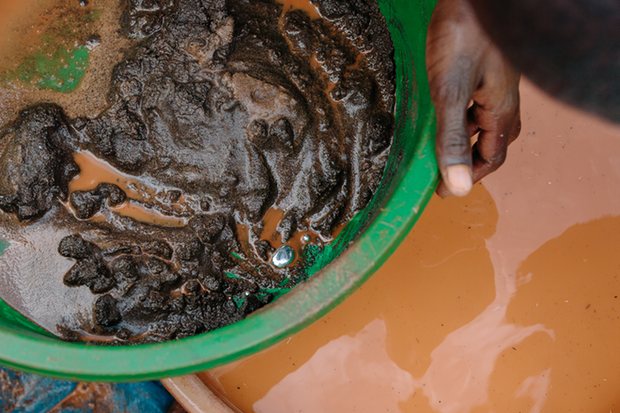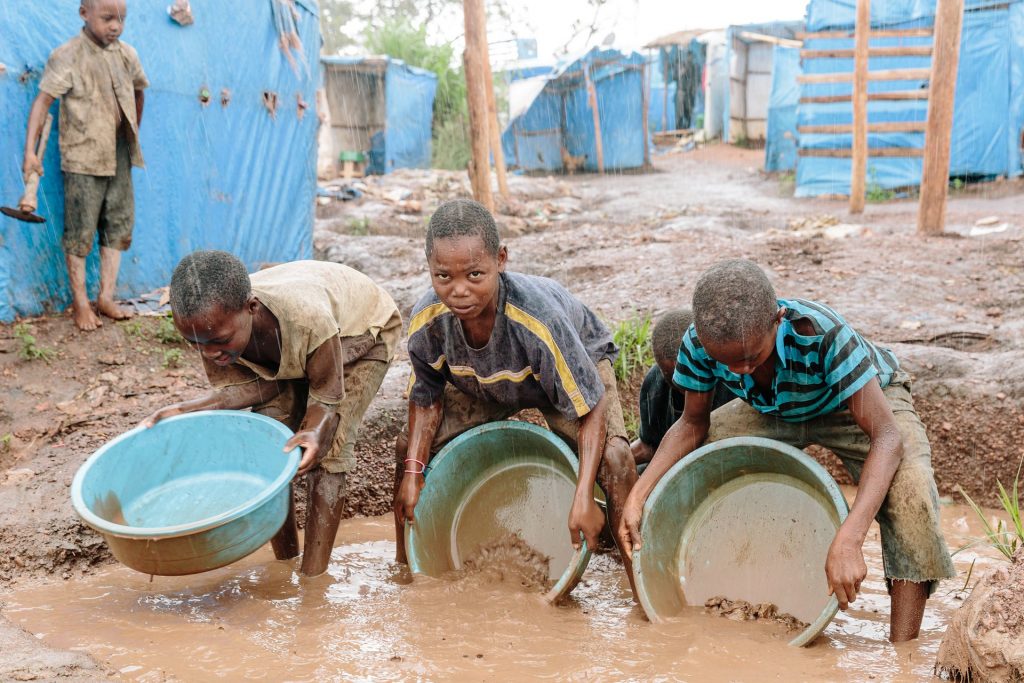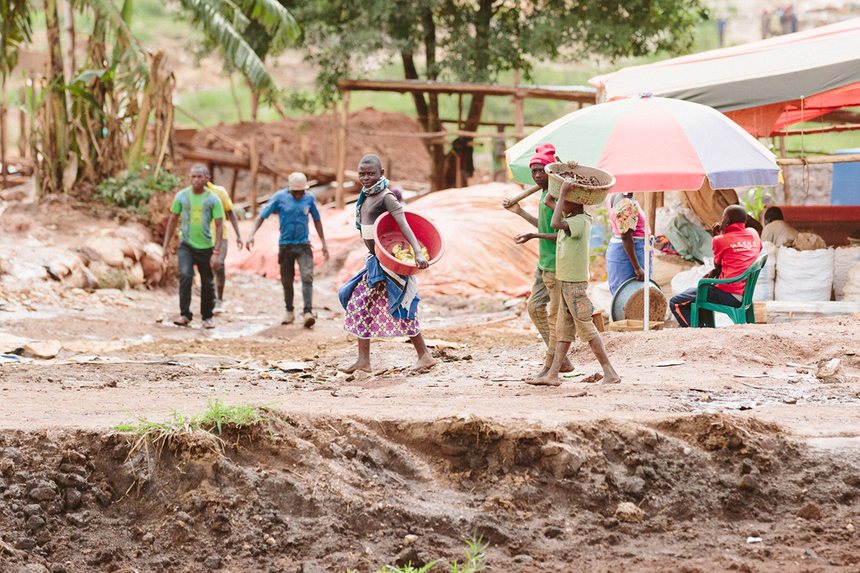
Agaba has no sense of a future beyond the mercury-laced waters of the gold mining pit he calls home in Mubende, central Uganda. Last year, after his mother died, the 15-year-old fled his home and became one of the 15,000 children reportedly working in artisanal gold mining in the country.
One of the oldest children working at this mine – some of those he works alongside are as young as eight – Agaba is engaged in what the International Labour Organisation (ILO) describes as the worst form of child labour. He spends up to 11 hours a day bending over makeshift gold pans, sluicing gold ore while standing ankle-deep in ponds of mercury and water.
Some of the children here, like Agaba, work for themselves, selling their bits of gold to middlemen who gather daily at the edges of the mine. The smaller children mainly work for older miners. Most are unaware of the dangers they face.

Photograph: Eelco Roos/Hivos
According to official records, however, the gold they unearth doesn’t exist. The work of children who risk their lives for a few dollars a day is fuelling a lucrative trade in illegal gold that is smuggled out of the country and into products and supply chains worldwide.
Following UN sanctions on Ugandans buying from traders in the nearby Democratic Republic of the Congo in 2007, Uganda’s official gold exports dropped from 6.9 tonnes in 2006 to 14 kilos in 2015.
Yet according to analysis by the Dutch research company Somo and the Stop Child Labour coalition, gold exports from illegal artisanal mines amount to up to 2.8 tonnes a year.
“Officially there is no significant gold mining industry in Uganda, but the reality is that there is a thriving illegal gold trade where up to 30% of gold miners are children,” says Irene Schipper, a senior researcher at Somo.
“Our research shows that the difference between the official export figures and the actual amount of gold exported from Uganda is huge … This is an entirely unregulated industry with no checks in place at all.”
Gold from artisanal mines is bought by independent traders. One such trader, an information technology graduate who saw a business opportunity in the booming illegal gold trade after failing to get a job in Kampala, travels from mine to mine, buying gold and carrying it back to the capital.
“[We] take it to Kampala and sell mostly to Indians, who then export it to China and Dubai,” he said.
Gold is filtered on to companies that, unregulated and ignored by government officials, broker deals with overseas buyers.
“We buy the gold. We do not care where it is from. If you have the gold we shall buy it,” said the desk clerk for one such firm. “It is our business.”
According to Somo’s research, much of the gold mined by child labourers is smuggled through Uganda’s porous borders and mixed with official gold exports before being traded on the international markets.
“The main problem for the children is that they are only looking at the short-term possibility of earning money to survive, but the gold mines are disastrous for their futures,” says Schipper. “They will not escape this low paid and dangerous work. They all work with mercury and none seem to be aware of the dangers. It isn’t just governments who need to be addressing this. Companies need to be more vigilant in checking their supply chains and to take steps to eradicate the use of mercury in the mines where their gold is coming from.”

Photograph: Eelco Roos/Hivos
Local NGOs and child protection agencies working at the mines say they cannot stop children looking for mine work. With more than 60% of the country on less than $3 (£2.06) a day, the state education system in decline, and youth unemployment at about 65%, the children at Mubende mines consider themselves lucky to have jobs.
Agaba sees a better future for himself in mining than at the government school to which his father sent him.
“I felt squeezed in a corner. We all know that there is no future when you go to a government school, it was as good as not going to school,” he said. “There is nothing good that would have come out of it. At least here I make money.”
“It has become normal to us now,” says Stephen Turyahikayo, a researcher for the Centre for Research and Sustainable Solutions, a Ugandan NGO working at the mines. “Nobody seems to care about these children. Not the government. Not the companies.”
Agaba’s scarred hands are testament to the hard labour of his daily life. He says on a good day he makes 10,000 shillings, about $2.50. Every night he sleeps in a tent made of sticks and blue polythene paper, sharing with eight other boys who drift in and out of the local mines searching for work.
The ILO estimates that there are up to 1 million children working in mining globally. While efforts have been made to regulate the global gold trade, illegal and artisanal gold mining is still riddled with child labour, trafficking and sexual exploitation.

“What we are seeing in the small-scale gold mines of Uganda and across Africa and the rest of the world is the very worst forms of child labour associated with one of the world’s most valuable commodities,” says Nadine Osseiran, senior programmes officer at the ILO.
“In the often unregulated and illegal artisanal gold mining sector there are no structures in place to protect these workers and it is impossible to stop gold dug by children entering global supply chains. There is almost no control over where gold comes from or where it is purchased.
“At the ILO we believe that child labour in gold mining could be eliminated in 10 years but, unfortunately, there is simply not the funding coming in to make this a reality.”
Although Uganda has taken some measures to tackle child labour, a ban on children working in the sector was not included in the country’s 2003 Mining Act.
The mines are all that children like Agaba have. “I am going to work here. Live here. Grow up and die here,” he says.
*Name changed to protect identity

